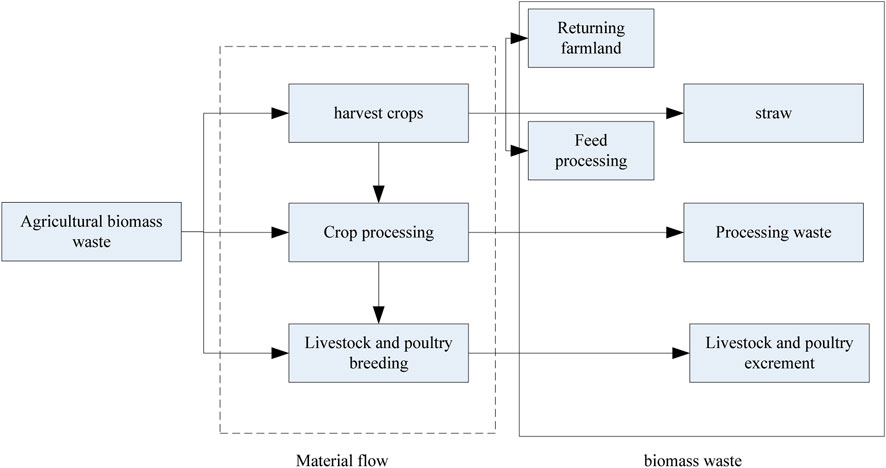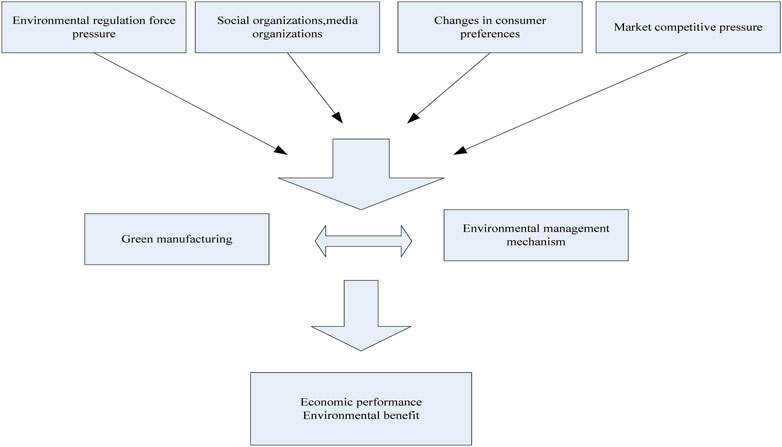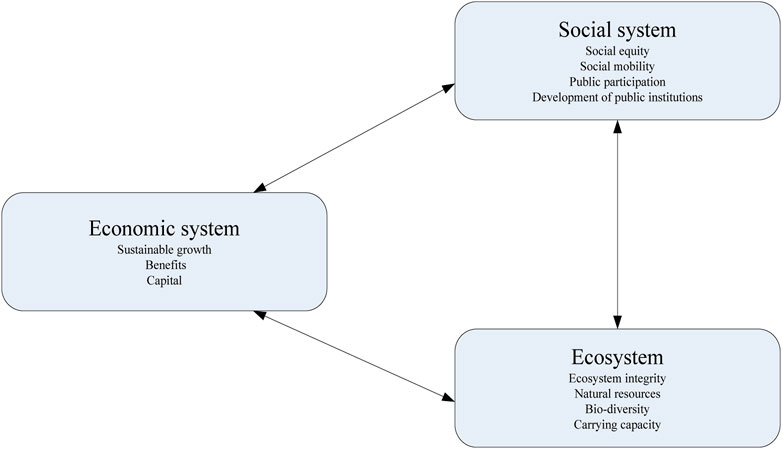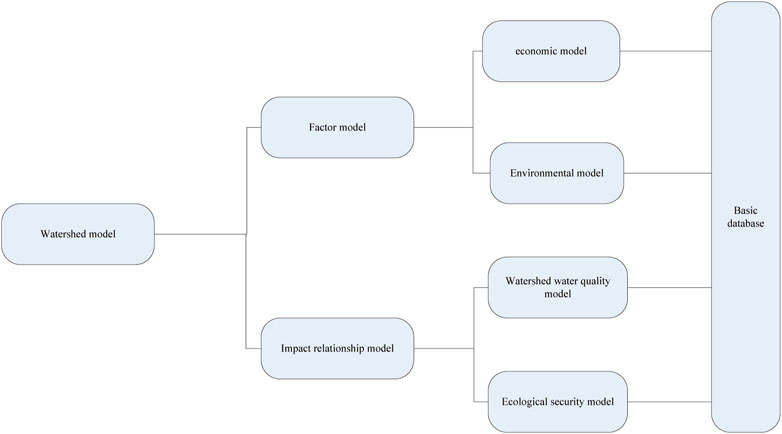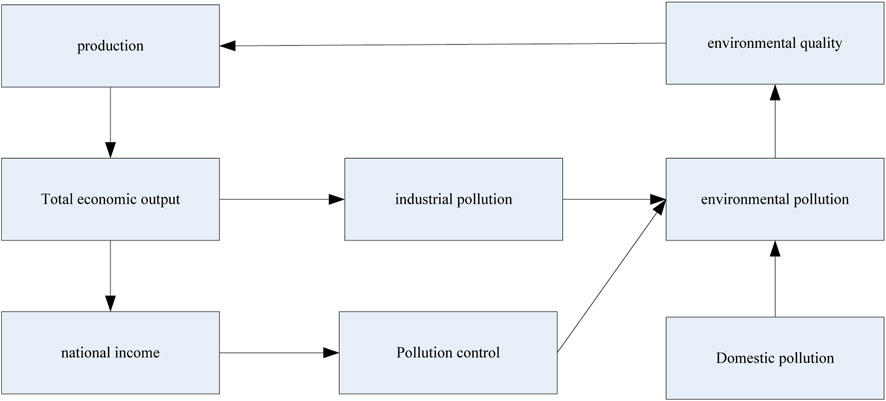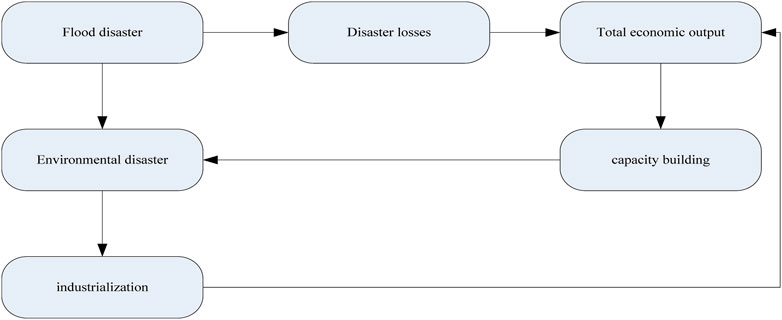- 1College of Business, Macao University of Science and Technology, Macao, China
- 2College of Business, Liaocheng University, Liaocheng, Shandong, China
With the development of industrialization, ecological and environmental problems have become increasingly prominent. In addition, the direct burning of crop straw and livestock manure also causes serious damage to the ecological environment. From the perspective of low-carbon economy, in order to promote the sustainable development of the ecological environment, this paper puts forward the idea of integrating the environmental management of enterprises, establishes the decision-making model of ecological environment management, and carries out related research. The experimental results show that the average error of cross-section water quality prediction is 2, the average error of pollutant discharge prediction is 2.1, and the highest ecological security degree is 1.28. The data show that the system dynamics method can effectively reduce the section water quality prediction error and pollutant discharge prediction error of the management decision-making model, and improve the accuracy of the model prediction. In the analysis experiment of the biomass energy potential of agricultural waste, livestock manure and straw waste accounted for 59.26% and 30.18% of the total, respectively. It can be seen that agricultural waste has a high content of convertible biomass energy, which can provide a large amount of renewable energy for human beings.
1 Introduction
In the past, most enterprises were keen on pursuing immediate economic benefits and did not pay attention to the parts beyond economic benefits. Over time, the economic benefits have brought about increasingly serious ecological and environmental problems. With the continuous implementation of the concept of sustainable development, enterprises have begun to pay attention to the protection of the ecological environment and have gradually integrated the concept of protecting the ecological environment into their daily production and operation activities in order to achieve a win–win development of economy and ecology. The sustainable development of enterprises is closely related to the ecological environment. In order to implement the concept of a low-carbon economy and promote the sustainable development of the ecological environment, it is necessary to build an ecological environment management decision-making model to promote the coordinated development of the economy and ecological environment.
In recent years, environmental management has caused widespread concern in the academic community, and many scholars have carried out relevant research on it. Mills et al. (2017) explored the complex relationship that affects farmers’ willingness to practice environmental management and found that to achieve sustainable environmental management, appropriate participation methods have to be developed to enable farmers to participate in environmental management. Hartmann and Stephan (2018) studied the impact of contextual variables: generosity, vitality, and complexity on the relationship between environmental management and organizational performance and found that “generosity” can promote the extent to which companies improve environmental performance by virtue of their environmental management capabilities. Elliott et al. (2017) built a unified marine integrated environmental management framework. In order to ensure the health of the ecosystem, they also provided a series of marine environmental management measures. Nasution et al. (2021) analyzed the potential environmental impact of the oil palm plantation and found that the formulation and implementation of environmental factors required a standardized environmental management system. Scarpellini et al. (2020) analyzed the environmental management system of companies with the help of theoretical framework of dynamic capabilities and accounting practices on natural resources. Wang et al. (2018) explored how institutional pressure can motivate enterprises to implement environmental management practices and found that institutional pressure is closely related to the implementation of environmental management practices in enterprises. However, these scholars’ research on environmental management is not comprehensive. Environmental management research should be fully based on enterprises in order to play a better role.
Some scholars have also conducted relevant research on enterprise and environmental management. Liu et al. (2020) proposed a green production method in combination with enterprise environmental management and established a product green production model with the enterprise environmental management system. The corresponding pollution prevention measures were taken for the selection of raw materials and the production process of products. Ushkulakova (2020) pointed out that the environmental management of enterprises can guarantee the sustainable development of economy. By integrating the environmental management system into enterprises, the sources and factors of environmental impact can be well managed. In general, there are not many research on enterprise and environmental management. In order to improve the relevant research on ecological environmental management, it is necessary to study the decision-making model of this based on enterprise environmental management.
In this article, the concept of sustainable development is applied to the decision-making model of ecological environment management, and combined with the method of system dynamics, an experimental analysis of the decision-making model of ecological environment management in the Yangtze River basin is carried out. Through experimental analysis, it is found that the average prediction error of cross-sectional water quality is 2 under this method and 4.88 under the traditional method. In terms of the prediction error of pollutant emissions, the average prediction error under this method is 2.1, and the average prediction error under the traditional method is 4.59. It can be seen from the abovementioned data that under the method of this work, the prediction error of pollutant discharge is smaller, and the prediction error of cross-sectional water quality is also smaller. This work also measured and analyzed the conversion of agricultural wastes into biomass energy and found that livestock manure accounted for the highest proportion of biomass energy potential, reaching 59.26%, which could provide a large amount of renewable energy for human daily production and life.
2 Decision making model of enterprise environmental management and ecological environment management
2.1 Agricultural wastes and agricultural biomass energy
Agricultural waste is a general term for waste from planting, agricultural product processing, livestock and poultry breeding, etc. Specifically, it includes crop straw, fallen leaves, weeds and fruit shells, agricultural product processing wastes and wastewater, and livestock and poultry manure.
Agricultural biomass energy mainly refers to the kind of energy converted from plants, livestock and poultry manure, organic wastes, and other similar wastes. Agricultural biomass energy can be converted into different fuels, and the energy is renewable, convenient to store, and will not pollute the environment, which is very environmentally friendly. At present, agricultural biomass energy has become the fourth largest type of energy in the world. Energization of agricultural biomass waste refers to the process of converting waste into energy through a series of methods. Energization is one of the ways to utilize agricultural waste as a resource. The inventory model of agricultural biomass waste is shown in Figure 1.
2.2 Concept and objectives of enterprise environmental management
Enterprise environmental management is a kind of management concept in the new era. Its purpose is to promote the coordinated development between enterprise management and the ecological environment, so as to achieve a win–win situation (Kaplan Hallam and Bennett, 2018). With the help of the concept of ecological environmental protection, it integrates with the daily business activities of the enterprise, fully reflects the idea of ecological environmental protection in the enterprise’s business strategy, and also adds consideration to environmental factors in specific business operations. The environmental management of enterprises is not simply to protect the ecological environment but to integrate the concept of ecological environmental protection, and the business thinking of enterprises would also change accordingly to broaden the direction of enterprise development and bring new wealth to enterprises to achieve both economic and social benefits. The conceptual framework of environmental management is shown in Figure 2.
The environmental operation of enterprises is the reintegration of the enterprise’s business mode and the proper adjustment of the enterprise’s business activities from the perspective of environmental protection (Haddaway et al., 2017). In order to make economic benefits coexist with the ecological environment and achieve sustainable development, enterprises have to conduct environmental management. In order to achieve the ultimate goal of enterprise environmental management, it is necessary to change the traditional business philosophy and model to achieve the goal of economic and environmental benefits. Environmental business objectives can be divided into the following two categories:
(1) The short-term goal is to achieve a win–win situation between the direct economic benefits of the enterprise and the visible environmental benefits (Arda et al., 2019). For example, implementing water-saving and electricity-using activities can not only reduce the consumption of water resources and electricity but also reduce the production and operating costs of enterprises.
(2) The long-term goal is to achieve the coordinated development between the overall operation of an enterprise and its ecological environmental protection. In the process of environmental operation, enterprises can not only bring visible economic benefits in a short time but also increase operating costs. Therefore, enterprises have to continue to promote environmental operation activities with a long-term vision. For example, in the production process, the use of environment-friendly materials can reduce the damage to the environment, although it cannot bring intuitive economic profits to enterprises. In the long run, these enterprises would have won the recognition of the consumers and society because they have undertaken social responsibilities, which has a good effect on improving the brand image of enterprises, thus enhancing the overall competitiveness of the enterprises.
2.3 Sustainable development and ecological environmental management
Sustainable development refers to the ability to meet the needs of future generations in addition to meeting the needs of contemporary people (Schaltegger, 2018). Social development is the goal of sustainable development, and constantly improving the quality of human life is the goal of social development. From the humanistic perspective, the core of sustainable development is economic development. To achieve sustainable development, there has to be a certain material basis, that is, resources, human beings as the main body, and the ecological environment as the support basis.
The framework structure of sustainable development is shown in Figure 3. The social system, economic system, and ecosystem together constitute the framework of sustainable development. The most critical part of this framework is the ecosystem. The necessary condition for sustainable development is the maintenance and sustainable development of the ecosystem (Baranova and Paterson, 2017). To achieve sustainable development, various factors such as economic development and resources, culture, environment, and other factors have to be considered.
The concept of ecological environmental management came into being when we had started to fight environmental pollution for a long time (Baranova and Meadows., 2017). At present, pollution is only the tip of the iceberg of environmental problems. For us, what is more terrible is the ecological problem. To solve the ecological environmental problem, economic, social, and environmental treatments have to be combined. In order to achieve the goal of ecological environmental management, the social and economic activities of human beings have to be adjusted and controlled in a variety of ways, the acts that damage the ecological environment should be cracked down, and the relationship between economic development and the ecological environment should be reconciled, so as to better achieve sustainable development. In ecological environmental management, it is also necessary to combine relevant theoretical knowledge to study the solutions of ecological environmental management from multiple dimensions, such as forecasting, planning, and making decisions on the ecological environment; managing environmental and economic policies, resources, and energy; and then analyzing the relationship between the ecological environment and social economy, and determining the interaction between the two can ensure that the ecological management countermeasures are more scientific and reliable.
3 Decision-making model of ecological environmental management based on system dynamics
3.1 Overview and characteristics of system dynamics
System dynamics is a method to study social and economic systems by means of feedback control theory and digital computer simulation technology (Lillah et al., 2017). System dynamics has the characteristics of system dialectics. It is mainly used to deal with feedback and non-linear problems in social systems. It has a good effect on the research of semi-quantitative and trend problems. In the beginning, system dynamics was widely used in enterprise management, and later it was gradually applied in social and economic systems. At present, system dynamics is widely used in many aspects, such as regional economic system, water resources carrying capacity, land resources carrying capacity, animal husbandry development planning, urban water environment, etc.
For the treatment of non-linear and time-varying phenomena, the system dynamics model is often used. This model can be used in long-term dynamic simulation research and has a good effect on the analysis of system structure and dynamic behavior. Therefore, it is often used to deal with system problems of dynamic behavior and can also play a better and ideal role in the analysis of social, economic, and environmental systems.
System dynamics has the following characteristics:
(1) The method of system dynamics can be used to study many problems in many fields, such as social, economic, ecological, and so on. In addition, whether macro or micro, complex systems at multiple levels can be studied.
(2) As the research object of system dynamics, the open system focuses on the analysis of the relationship between the system and its ecological environment and believes that the system itself is developmental and dynamic (Kiseleva et al., 2020).
(3) In the research methods of system dynamics, there are qualitative and quantitative methods. In addition to these, the methods of analysis, synthesis, and reasoning are also included. Moreover, poor structures are optimized using the “whitening” technology.
(4) The system dynamics model is called the laboratory of the social economic system. This is because we can get a significant amount of effective information resources by simulating the analysis system and finding ways to solve a series of problems. Because the system dynamics model is applied in many fields, it can conduct qualitative and quantitative analysis of the past, present, and future and also play a good role in enterprise management and decision-making (Jain et al., 2022).
(5) Feedback of system dynamics. Feedback mainly refers to the relationship between the system output and external environment input and can realize the system output by means of the other units, sub-blocks, or other systems.
3.2 Ecological environmental management decision-making model
This work takes the Yangtze River basin as its research object. The research content is the relationship between the ecological environment and human activities, and the research purpose is sustainable development. A decision-making model of ecological environmental management is constructed, as shown in Figure 4. The model is composed of the impact relationship model and factor model, which are divided into the watershed water quality model and watershed ecological security model. The factor model is also divided into two parts: the economic model and environmental model. The four branch models are connected with the database to form the ecological environmental management decision-making model.
3.3 Composition of ecological environmental management decision-making model
3.3.1 Watershed water quality model
The watershed water quality model uses a one-dimensional degradation water quality model (Janković et al., 2021). Based on the location relationship between sections, the water quality of each control section is calculated from upstream to downstream according to the pollutant discharge of different units. The formula of the basin water quality model is as follows:
In the abovementioned formula, the pollutant concentration of the section is represented by
In the calculation, it is necessary to predict the economic development level of the Yangtze River basin in combination with the economic model and create data statistics on the per capita domestic wastewater discharge and per capita industrial wastewater discharge in combination with the population. It is assumed that the industrial structure would be adjusted and pollution control would be implemented. On this basis, the wastewater discharge would be predicted by units, and the water quality change of each unit section would be simulated and predicted by combining the decision-making model to generate the corresponding response relationship.
3.3.2 Economic model
The economic model is an improvement of the neoclassical economic growth model, which includes the endogenesis of savings rates and technology (MacLaren et al., 2020). These improvements are mainly accomplished by the relationship among life cycle function, technological progress rate, and investment rate. The economic model formulas are as follows:
In the abovementioned formulas, the output is the capital stock expressed by
Many factors affect the economic growth, and their effects on economic growth are two-sided, that is, positive and negative effects (Polasky et al., 2019). Therefore, the economic model has to remove these negative impacts, as given in the following formula:
The growth rate of green GDP is expressed as
3.3.3 Environmental model
According to the pollution data of the Yangtze River basin in 2005 and the economic development of each region, the relationship between the per capita industrial wastewater discharge and the per capita GDP in the Yangtze River basin is expressed as follows:
Among these, the per capita industrial wastewater discharge (t/person) is represented by
According to the economic development and population change of the basin, the wastewater discharge is simulated in different regions. It is assumed that after the adjustment of the industrial structure, the wastewater discharge would also be reduced accordingly, and then combined with the watershed water quality model, the water quality standards of each regional section would be calculated such that the water quality of each regional section can reach the category.
The regional wastewater discharge is predicted, and the proportion of the total amount of water pollutants accumulated at each control point in the basin is calculated to generate the Lorenz curve and calculate the environmental Gini coefficient. Under the principle of sustainable development fairness, the environmental Gini coefficient has an interval range, so the regional wastewater discharge should also be adjusted accordingly, which is expressed as
Among these, the adjusted regional wastewater discharge is represented by
3.4 Main relationship of regional system
The ecological environment system of the Yangtze River basin is relatively complex, so it is necessary to integrate multiple sub-models and describe the impact the relationship among the sub-models with the help of system dynamics to complete the dynamic description of the system. The main relationship of the regional system is described in Figures 5, 6. While the economy is developing, it would also cause certain damage to the environment, resulting in environmental pollution problems, which would affect the quality of the environment. The continuous deterioration of the environment would cause more serious ecological problems, leading to frequent natural disasters and causing serious ecological disasters. Ecological disasters would affect the economy and restrict economic development. The economy, environment, and ecology form a loop, interacting and influencing each other.
3.5 Experimental analysis on decision-making model of ecological environmental management in the Yangtze River basin
In order to verify the reliability of the system dynamics method, this work calculates and analyzes the rivers in Jiangsu, Zhejiang, Hubei, and Jiangxi, respectively, in combination with the ecological environmental management decision-making model, and conducts comparative experiments with the traditional methods. The specific experimental results are shown below.
3.5.1 Prediction error of cross-sectional water quality
In this work, cross-sectional water quality prediction experiments have been carried out on rivers in some regions of the Yangtze River basin, and the statistics has been created on the prediction errors of the cross-sectional water quality. The prediction error results of the two methods are shown in Figure 7.
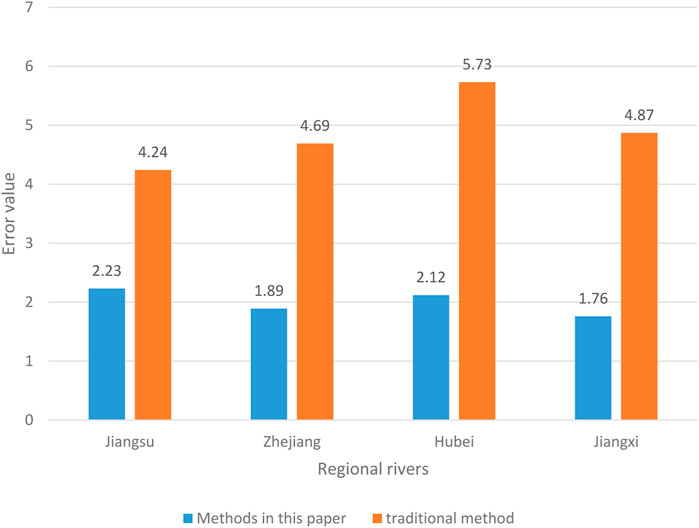
FIGURE 7. Comparison of water quality prediction errors of regional river sections using different methods.
It can be seen from Figure 7 that in the cross-sectional water quality prediction experiment for rivers in different regions of the Yangtze River basin, the prediction errors of the two methods are different. Under the methods of this work, the prediction error of cross-sectional water quality is relatively small on the whole, of which the river water quality prediction error in Jiangxi is the smallest at 1.76 and that in Jiangsu is the largest at 2.23. The average error value of cross-sectional water quality prediction of rivers in the four regions is 2. Under the traditional algorithm, the prediction error of cross-sectional water quality is relatively large on the whole, among which the river water quality prediction error in Jiangsu is the smallest at 4.24, and that in Hubei is the largest at 5.73. The average error value of cross-sectional water quality prediction of rivers in the four regions is 4.88. It can be seen that the water quality prediction error in this method is smaller.
3.5.2 Prediction error of pollutant emissions
In order to further compare the prediction effects of the two methods, this work conducted prediction error experiments on the annual pollutant emissions of rivers in different regions. The experimental results are shown in Figure 8.
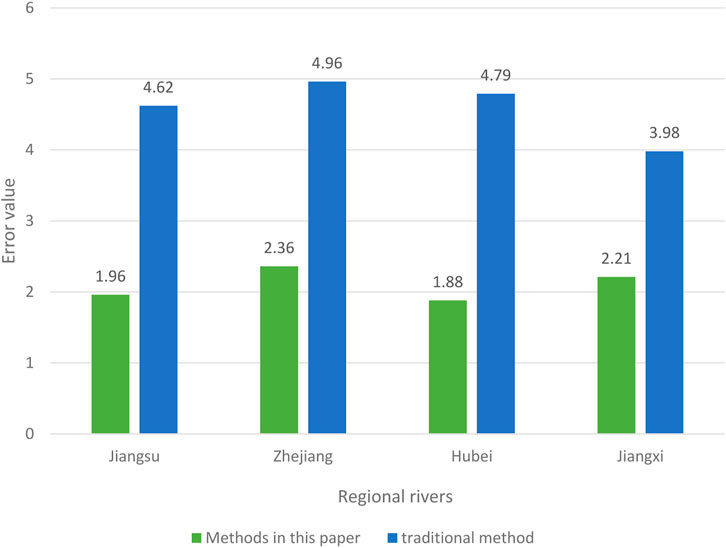
FIGURE 8. Comparison of prediction errors of annual pollutant discharge of regional rivers using different methods.
It can be seen from Figure 8 that in the experiment of prediction error of annual pollutant discharge of rivers in different regions, the prediction error values from the two methods are obviously different. Using the algorithm in this work, the prediction error of the annual pollutant discharge of rivers in Hubei is the smallest, which is 1.88. The prediction error of annual pollutant discharge of rivers in Zhejiang is the largest, which is 2.36. It can be calculated that the average prediction error of annual pollutant discharge of the four regions is 2.1. Using the traditional algorithm, the prediction error of the annual pollutant discharge of rivers in Jiangxi is the smallest at 3.98 and the prediction error of the annual pollutant discharge of rivers in Zhejiang is the largest at 4.96. The average error of the prediction of the annual pollutant discharge of the four regions is 4.59. From the abovementioned data, it can be seen that the prediction error of annual pollutant discharge using this algorithm is smaller, and the fluctuation range of the prediction error of annual pollutant discharge between rivers in different regions is smaller.
3.5.3 Prediction of basin ecological security
In order to compare the differences between the two methods more comprehensively, ecological security prediction experiments were conducted in the Yangtze River basin, and the prediction results are shown in Figure 9.
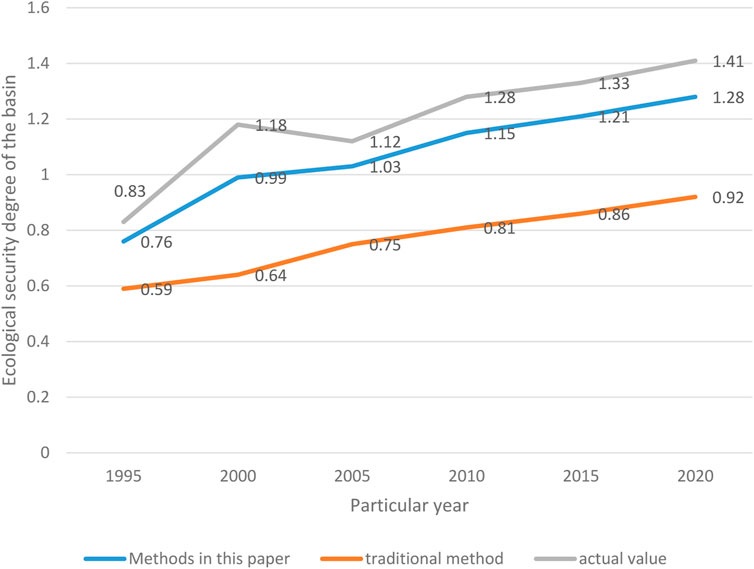
FIGURE 9. Comparison of the prediction of ecological security degree of the basin using different methods.
It can be seen from Figure 9 that in the basin ecological security prediction experiment, the results of the two methods are different. According to the methods of this work, with the passage of years, the predicted value of the ecological security degree of the Yangtze River basin has been increasing every year. The predicted value of the ecological security degree has increased from 0.76 to 1.28. When compared with the actual value of the ecological security degree, the predicted value is lower, but it is closer to the actual value on the whole. According to the traditional method, the predicted value of the ecological security degree of the Yangtze River basin has also increased with each passing year: from the initial 0.59 to 0.92, with a relatively small growth rate. When compared with the actual value, the predicted value of the ecological security degree has a large gap. It can be seen that the predicted value of watershed ecological security degree according to this method is closer to the actual value, so the predicted result is more accurate.
3.6 Biomass energy potential of agricultural wastes
In this work, the potential of agricultural wastes to be converted into biomass for energy has been experimentally measured, and the statistical results are shown in Figure 10.
It can be seen from Figure 10 that in terms of biomass energy conversion of agricultural wastes, the biomass energy potential of livestock manure is the highest, accounting for 59.26%, followed by that of straw wastes, accounting for 30.18%, and then that of agricultural by-product processing wastes which is the lowest, accounting for 10.56%. It can be seen from the abovementioned data that agricultural waste can be converted into a lot of biomass energy. The conversion of agricultural waste into biomass energy can turn waste into treasure and obtain available energy.
4 Conclusion
With the emergence of global warming, glacier melting, and other issues, ecological and environmental issues have attracted increasing attention from all walks of life. Many enterprises are no longer simply pursuing economic benefits but integrating the concept of ecological and environmental protection into their daily operations. There is more biomass energy that can be converted from agricultural waste, and the biomass energy content that can be converted from straw waste and livestock manure is relatively high, in which more than half of the biomass energy can be converted from livestock manure. Converting agricultural waste into usable biomass energy can also effectively improve the ecological environment. Aiming at the ecological environmental problem, this work takes the Yangtze River basin as the object, establishes the ecological environmental management decision-making model, and combines the system dynamics method to carry out the relevant experimental analysis on the ecological environmental management decision-making model. Using this method, the obtained predicted value of watershed ecological security degree is closer to the actual value, indicating that the prediction accuracy of this method is very high, the prediction error of cross-sectional water quality is smaller, and the prediction error of pollutant discharge is also smaller. In future research work, the system dynamics method also has to constantly adapt to the developmental needs of the ecological environmental management decision-making model, improve the performance of the method, and provide more accurate prediction data information for the model.
Data availability statement
The original contributions presented in the study are included in the article/Supplementary Material; further inquiries can be directed to the corresponding authors.
Author contributions
All authors listed have made a substantial, direct, and intellectual contribution to the work and approved it for publication.
Funding
This work was supported by the National Social Science Fund of China (approval number: 20BJY074).
Conflict of interest
The authors declare that the research was conducted in the absence of any commercial or financial relationships that could be construed as a potential conflict of interest.
Publisher’s note
All claims expressed in this article are solely those of the authors and do not necessarily represent those of their affiliated organizations, or those of the publisher, the editors, and the reviewers. Any product that may be evaluated in this article, or claim that may be made by its manufacturer, is not guaranteed or endorsed by the publisher.
References
Arda, O. A., Bayraktar, E., and Tatoglu, E. (2019). How do integrated quality and environmental management practices affect firm performance? Mediating roles of quality performance and environmental proactivity. Bus. Strategy Environ. 28 (1), 64–78. doi:10.1002/bse.2190
Baranova, P., and Meadows., M. (2017). Engaging with environmental stakeholders: Routes to building environmental capabilities in the context of the low carbon economy. Bus. Ethics A Eur. Rev. 26 (2), 112–129. doi:10.1111/beer.12141
Baranova, P., and Paterson, F. (2017). Environmental capabilities of small and medium sized enterprises: Towards transition to a low carbon economy in the East Midlands. Local Econ. 32 (8), 835–853. doi:10.1177/0269094217744494
Elliott, M., Burdon, D., Atkins, J., Borja, A., Cormier, R., de Jonge, V., et al. (2017). “And DPSIR begat DAPSI (W) R (M)!”-a unifying framework for marine environmental management. Mar. Pollut. Bull. 118 (1-2), 27–40. doi:10.1016/j.marpolbul.2017.03.049
Haddaway, N. R., Kohl, C., Rebelo da Silva, N., Schiemann, J., Spök, A., Stewart, R., et al. (2017). A framework for stakeholder engagement during systematic reviews and maps in environmental management. Environ. Evid. 6 (1), 11–14. doi:10.1186/s13750-017-0089-8
Hartmann, J., and Stephan, V. (2018). Linking environmental management to environmental performance: The interactive role of industry context. Bus. Strategy Environ. 27 (3), 359–374. doi:10.1002/bse.2003
Jain, D. K., Tyagi, S. K. S., Neelakandan, S., Prakash, M., and Natrayan, L. (2022). Metaheuristic optimization-based resource allocation technique for cybertwin-driven 6G on IoE environment. IEEE Trans. Ind. Inf. 18 (7), 4884–4892. doi:10.1109/tii.2021.3138915
Janković, R., Mihajlović, I., Štrbac, N., and Amelio, A. (2021). Machine learning models for ecological footprint prediction based on energy parameters. Neural Comput. Applic 33, 7073–7087. doi:10.1007/s00521-020-05476-4
Kaplan Hallam, M., and Bennett, N. J. (2018). Adaptive social impact management for conservation and environmental management. Conserv. Biol. 32 (2), 304–314. doi:10.1111/cobi.12985
Kiseleva, T. V., Mikhailov, V., Ivushkin, A., and Mikhailova, Y. (2020). Designing of an automated environmental management system for an industrial enterprise. Izvestiya Samara Sci. Cent. Russ. Acad. Sci. 22 (6), 78–86. doi:10.37313/1990-5378-2020-22-6-78-86
Lillah, R., Miemie, F., and Struwig, W. (2017). South African small and medium-sized enterprise owners’ intention to implement an environmental management system. South. Afr. J. Entrepreneursh. Small Bus. Manag. 9, 1–8. doi:10.14505/jemt.v11.8(48).00
Liu, Y., Li, R., Yin, Q., and Tarly, S. (2020). Product's green production method based on environmental management and ecological perspective of enterprise. Int. J. Prod. Dev. 24 (2-3), 200–216. doi:10.1504/ijpd.2020.110270
MacLaren, C., Storkey, J., Menegat, A., Metcalfe, H., and Dehnen-Schmutz, K. (2020). An ecological future for weed science to sustain crop production and the environment. A review. Agron. Sustain. Dev. 40, 24–29. doi:10.1007/s13593-020-00631-6
Mills, J., Gaskell, P., Ingram, J., Dwyer, J., Reed, M., and Short, C. (2017). Engaging farmers in environmental management through a better understanding of behaviour. Agric. Hum. values 34 (2), 283–299. doi:10.1007/s10460-016-9705-4
Nasution, A. P., Wibowo, E. A., Ramdani, R., and Rofiqah, T. (2021). Urgensity of environmental management system implementation on oil palm plantation management policies in north sumatera. J. Soc. Transformation Regional Dev. 3 (1), 1–6. doi:10.30880/jstard.2021.03.01.001
Polasky, S., Kling, C. L., Levin, S. A., Carpenter, S. R., Daily, G. C., Ehrlich, P. R., et al. (2019). Role of economics in analyzing the environment and sustainable development. Proc. Natl. Acad. Sci. 116 (12), 5233–5238. doi:10.1073/pnas.1901616116
Scarpellini, S., Valero Gil, J., Moneva, J. M., and Andreaus, M. (2020). Environmental management capabilities for a “circular eco-innovation”. Bus. Strategy Environ. 29 (5), 1850–1864. doi:10.1002/bse.2472
Schaltegger, S. (2018). Linking environmental management accounting: A reflection on (missing) links to sustainability and planetary boundaries. Soc. Environ. Account. J. 38 (1), 19–29. doi:10.1080/0969160x.2017.1395351
Ushkulakova, G. (2020). Environmental management as a factor in the safe management of a modern enterprise. J. Environ. Manag. Tour. 11 (8), 2094–2102. doi:10.14505/jemt.11.8(48).20
Keywords: enterprise environmental management, decision model of ecological environment management, agricultural waste, biomass energy, system dynamics method
Citation: Li X and Gao J (2023) Decision-making model of sustainable ecological environment management based on enterprise environmental management under a low-carbon economy. Front. Energy Res. 11:1221910. doi: 10.3389/fenrg.2023.1221910
Received: 13 May 2023; Accepted: 09 June 2023;
Published: 30 June 2023.
Edited by:
Amrit Mukherjee, University of South Bohemia in České Budějovice, CzechiaReviewed by:
Zhihong Sun, Guangzhou Universidhebei Cangzhou Ecological Environmental Monitoring Center, ChinaDazhong Shu, Sanya University, China
Copyright © 2023 Li and Gao. This is an open-access article distributed under the terms of the Creative Commons Attribution License (CC BY). The use, distribution or reproduction in other forums is permitted, provided the original author(s) and the copyright owner(s) are credited and that the original publication in this journal is cited, in accordance with accepted academic practice. No use, distribution or reproduction is permitted which does not comply with these terms.
*Correspondence: Jiangang Gao, Z2FvamlhbmdhbmdAbGN1LmVkdS5jbg==
 Xiaoao Li1
Xiaoao Li1 Jiangang Gao
Jiangang Gao